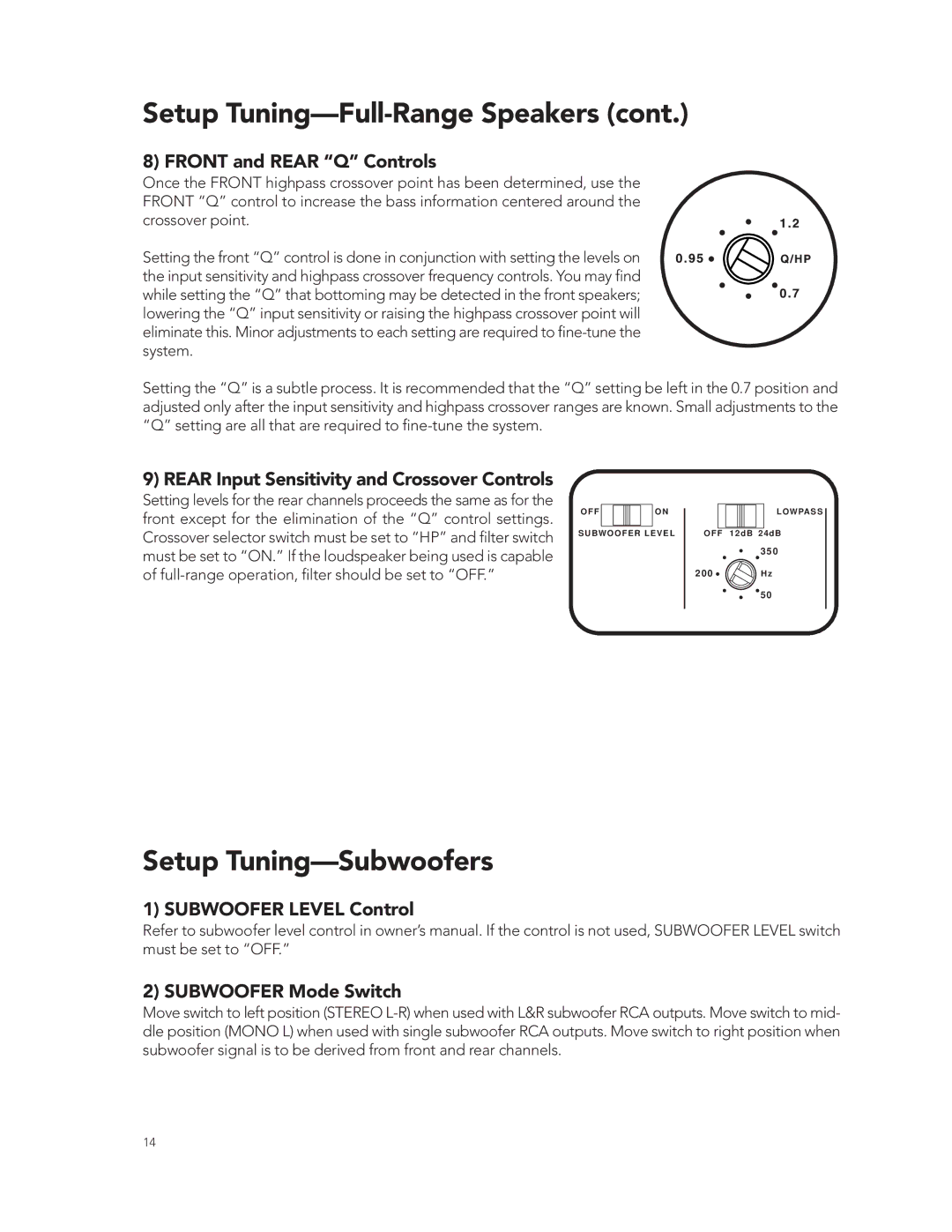
Setup Tuning—Full-Range Speakers (cont.)
8) FRONT and REAR “Q” Controls
Once the FRONT highpass crossover point has been determined, use the FRONT “Q” control to increase the bass information centered around the crossover point.
Setting the front “Q” control is done in conjunction with setting the levels on the input sensitivity and highpass crossover frequency controls. You may find while setting the “Q” that bottoming may be detected in the front speakers; lowering the “Q” input sensitivity or raising the highpass crossover point will eliminate this. Minor adjustments to each setting are required to
Setting the “Q” is a subtle process. It is recommended that the “Q” setting be left in the 0.7 position and adjusted only after the input sensitivity and highpass crossover ranges are known. Small adjustments to the “Q” setting are all that are required to
9) REAR Input Sensitivity and Crossover Controls
Setting levels for the rear channels proceeds the same as for the front except for the elimination of the “Q” control settings. Crossover selector switch must be set to “HP” and filter switch must be set to “ON.” If the loudspeaker being used is capable of
OFFON
SUBWOOFER LEVEL
LOWPASS
OFF 12dB 24dB
3 5 0
2 0 0 | Hz |
5 0
Setup Tuning—Subwoofers
1) SUBWOOFER LEVEL Control
Refer to subwoofer level control in owner’s manual. If the control is not used, SUBWOOFER LEVEL switch must be set to “OFF.”
2) SUBWOOFER Mode Switch
Move switch to left position (STEREO
14
